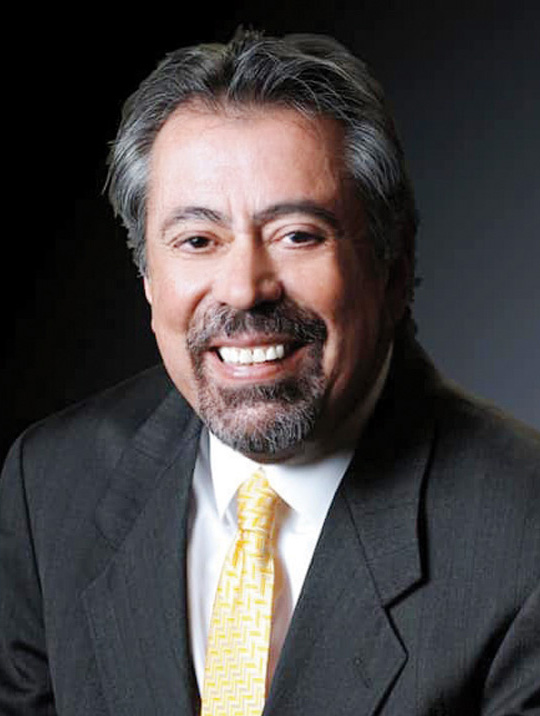After suspending funding for the Starr County High Intensity Drug Trafficking Area task force in June, South Texas HIDTA agreed to reinstate funding beginning next month.
The South Texas HIDTA executive board voted to reinstate the funding during a board meeting in San Antonio on Dec. 9, during which incoming 229th District Attorney Gocha Ramirez, incoming Assistant District Attorney Abel Villarreal Jr. and incoming HIDTA Commander Manuel Marroquin successfully made their case to the board to have funding restored.
The reinstatement of the funds will coincide when Ramirez takes office as the new 229th district attorney, an office which prosecutes cases for Starr, Duval and Jim Hogg counties.
The 229th District Attorney’s Office oversees the Starr County HIDTA task force which consists of law enforcement officers from different agencies throughout the county such as the Rio Grande City Police Department and the Starr County Sheriff’s Office.
Ramirez explained that work on re-establishing the task force began before it was actually suspended.
In May, Ramirez said a friend who was a member of the HIDTA executive board, told him the board was considering defunding the program in Starr County and had apparently been looking at the task force since 2017.
“There’s been some terrible mismanagement, they’re obviously not fulfilling their mission, there’s some serious issues with HIDTA and so they’re thinking about just doing away with HIDTA,” Ramirez said he was told.
But because there would be change in administration with Ramirez’s election, the board only suspended funds and stated they would reassess the suspension after Dec. 31.
About a week after, Ramirez said he met with members of the executive board, the HIDTA commander in Hidalgo County and his assistant, and also with the executive director of South Texas HIDTA, Tony Garcia.
“They started, basically, going through a very long laundry list of things that HIDTA was doing wrong in Starr County or … things that they should have been doing but they were not doing,” Ramirez said. “A lot of it involved the fact that they were just not doing what they were designed to do — they were picking low-hanging fruit, they were making up numbers, they were using their cellphones for private business and personal use, they were misusing HIDTA vehicles, (and) they had built in their overtime into their salaries, which freaks me out completely because there’s no incentive to do overtime if it’s built into your salary.”
In response to those allegations, current 229th District Attorney Omar Escobar Jr. said the only thing that was brought up to his attention was the issue of statistics.
“The HIDTA initiative wanted more arrests and wanted more persons identified,” Escobar said, referring to people involved in drug trafficking organizations.
“In the end, all of the grant funding is about stats,” Escobar said. “It’s about how many people you arrest and not just how many people you arrest but how many people you identify.”
And that had became an issue for the Starr County task force, Escobar acknowledged.
“There had been a drop off of numbers in the past two years, I’ll admit that,” Escobar said.
For that, he credited the increased presence of state and federal law enforcement agencies along the border.
“If you catch something on the river and Border Patrol hands over the case, because that’s what usually happens, Border Patrol would go and arrest somebody and, rather than the feds take the case, they would turn over the body of the person and the marijuana or the drugs over to the HIDTA task force,” Escobar explained. “And the HIDTA task force would consider it a statistic. But up there, in San Antonio, they’d say ‘Well, that’s not really a statistic … because Border Patrol took it down.”
He added, “Most of the stats that were coming in were from Border Patrol and, remember, the aerostats also had an effect on drug trafficking in Starr County.”
“Did it eliminate it? No. But those aerostats are watching, whenever they’re up, they’re watching the entire border,” Escobar said.
He reiterated that HIDTA wanted not just isolated drug arrests but that those arrests be tied to drug trafficking organizations.
“It became somewhat more difficult to be able to tie these people into drug trafficking organizations and that’s really what HIDTA wants,” Escobar said. “If you get a drug seizure, they really want you to tie it into some organization. It can’t just be some individual.”
With the reinstatement of the program, Escobar said Ramirez’s administration must have made assurances regarding those statistics.
“I think in the end, to get anything back, that’s what it’s going to come down to,” Escobar said. “It sounds to me like representations were made that more people would be arrested and that there’s going to be more members of drug trafficking organizations identified.”
Ramirez said that in addition to putting together the strategic plan, he also implemented a policy and procedures manual to address the employees of the district attorney’s office and also all the issues that were damaging the task force, such as the use of informants, the payment of informants, the use of vehicles, and the alleged failure to cooperate with federal agencies.
During a Starr County Commissioners Court meeting on Monday, Villarreal, the incoming first assistant district attorney, said U.S. Customs and Border Protection, the National Guard, Border Patrol, the Drug Enforcement Administration, and the Department of Homeland Security would be assigning full-time members to the task force.




